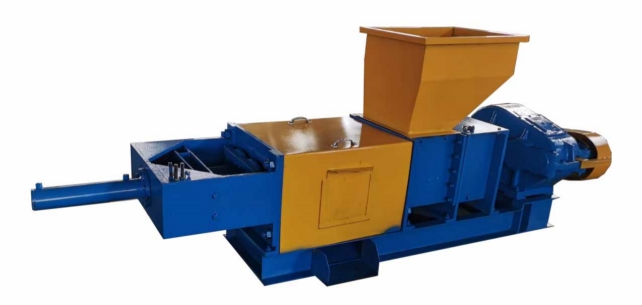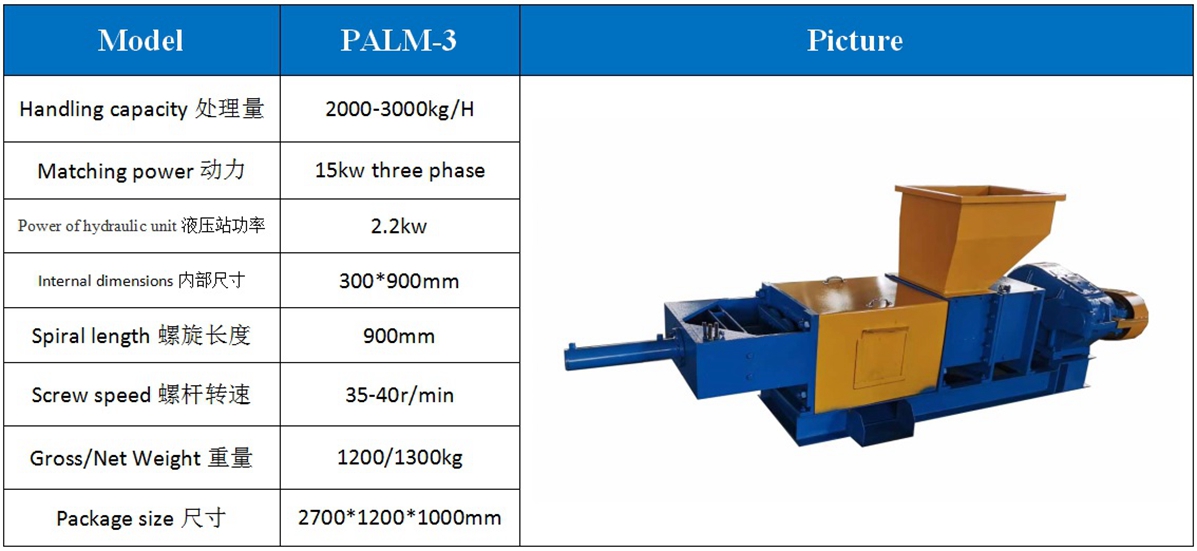N'hésitez pas à écrire votre demande dans le formulaire ci - dessous. Nous vous répondrons dans les 24 heures.
Nous protégerons strictement la confidentialité des informations personnelles de nos utilisateurs et ne les divulguerons jamais.

Matériau : acier au carbone/matériau résistant à l'usure Couleur : bleu/jaune
Capacité de traitement : 2-3t/j
Model: PALM-3Type: Palm oil pressSpecifications: 2-3t/dMaterial: carbon steel/wear-resistant materialColor: blue/yellow
détails du produit
Presse à huile de palme double vis PALM-3
partager à:
Presse à huile de palme double vis PALM-3
Modèle : PALM-3
Type : Pressoir à huile de palme
Spécifications : 2-3t/j
Matériau : acier au carbone/matériau résistant à l'usure.
Couleur: bleu/jaune
Marque : TOP Machines
N° : T008
détails du produit
Presse à huile de palme double vis PALM-3
Ingrédients : grappes de fruits frais du palmier
Taux de production d’huile de palme : 35 à 45 % proviennent des régimes de fruits du palmier.
Capacité de production : grappes de fruits de palmier 3-5T/H
Processus principal :
Raw material receiving section--sterilization station--threshing section--digestion and pressing station--oil clarification station--kernel recycling station
Bundle reception station:
The palm oil processing plant starts after harvesting the palm fruit bunches and sends them to the palm oil mill for processing. During the harvesting process, the fruit should be handled carefully to prevent bruising, which can reduce the quality of the extracted oil.
Sterilization station:
Sterilization follows a process that uses large amounts of heat to cook the fruit. In this palm oil processing station, enzymatic reactions are also stopped, preventing hydrolysis, auto-oxidation, and the outer skin of the fruit (exocarp) is weakened, making it easier to extract oil from the fruit. This process can be done by roasting/smoking which takes place after the threshing process or by steaming/boiling which should be done before the threshing process.
Threshing station:
The fruit bunches are then threshed and the small fruits are separated from the bunches in a drum. It can be done manually or mechanically by using palm oil processing machinery - thresher/thresher. The loose fruit is then conveyed to another palm oil processing machine - the digester, and the empty fruit bunches are separated and returned to the plantation or used as fuel in boilers.
Digestive station:
The fruit is then digested in the digester. The process involves crushing the fruit and heating the pulp before the oil is extracted. To maximize oil extraction, heating is important.
Using twin-screw palm fruit oil press:
The oil is then clarified, during which impurities are screened to remove large fibrous solids and dirt from the crude oil. Water is then added to the crude oil to improve the separation process. After sieving, crude crude oil is obtained, but it still contains fine solids and water. Water is removed by introducing steam into the coil (increasing the temperature in the coil). The fine solids in the oil are eventually removed during sedimentation, thus separating the oil from the sludge, yielding approximately 163 kilograms of oil per ton of palm fruit processed.
Kernel recycling station: The pressed cake (fiber & nuts) is transported to the fiber separation system for fiber & nut separation, and the separated nuts are sent to the nut warehouse for temporary storage.
Les noix de palmiste sont broyées dans un broyeur ondulé pour obtenir un mélange de palmistes et de coques.
Paramètres de l'appareil :

N'hésitez pas à écrire votre demande dans le formulaire ci - dessous. Nous vous répondrons dans les 24 heures.
Nous protégerons strictement la confidentialité des informations personnelles de nos utilisateurs et ne les divulguerons jamais.